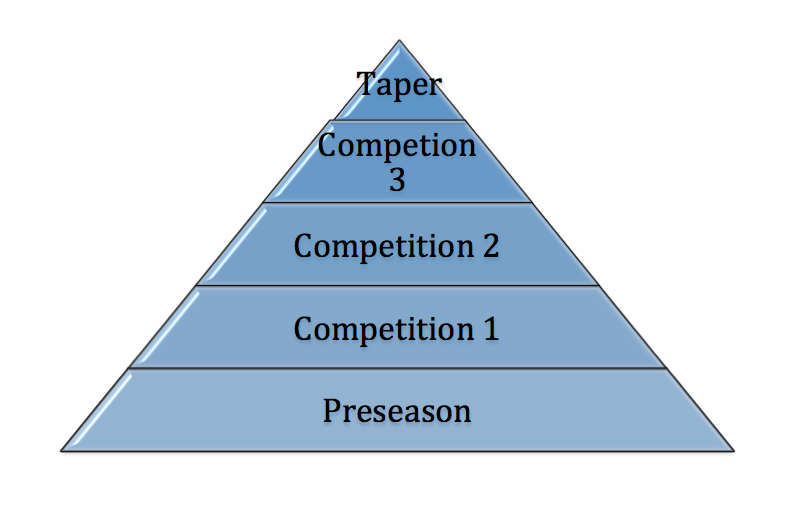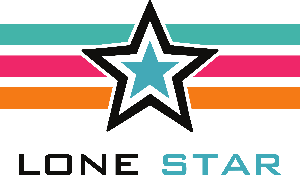Training Pyramid

At the outset of each phase, we embark on a journey of self-discovery andstrategic planning. We meticulously assess the current status and set objectives that serve as guiding beacons through the tumultuous waters of training.
In our lexicon, the term that encapsulates our approach to training across an entire phase is the Macrocycle. It's not just a stretch of time; it's a crucible where champions are forged. The SCY Macrocycle, spanning from September to mid-March, is our arena for honing skills and dominating short course meets. As the season transitions from mid-March to August, our focus shifts to the grand stage of Olympic standard meets, mastering the 50-meter domain.
Within each Macrocycle, we meticulously carve out Mesocycles, the building blocks of our training regimen. These Mesocycles serve as waypoints in our journey, each tailored to the athlete's goals and the rhythm of competitions.
But our approach isn't static; it's dynamic, ever-evolving to meet the demands of peak performance. Within each Mesocycle, we dissect time into Microcycles, short bursts of focused training that hone in on daily and weekly variations. It's a relentless pursuit of optimization, a symphony of intensity, volume, and technique orchestrated to perfection.
By weaving Mesocycles and Microcycles into the fabric of our Macrocycle, we not only stave off the specter of overtraining but also unlock the full potential of our athletes. It's a delicate dance of adaptation and refinement, sculpting champions from raw potential.
Our seasons are not just a linear progression; they're a symphony of transformation, each Mesocycle building upon the last. From the groundwork laid during the Preseason to the crescendo of performance at the Taper, every phase serves a purpose in our relentless pursuit of excellence.
The Preseason, with its measured doses of intensive training, serves as the crucible where muscle and sensory awareness are forged. The early Competition Mesocycles refine and condition the athlete, laying the groundwork for peak performance. And it's during the final Competition Mesocycle that we fine-tune every aspect, preparing the athlete to unleash their full potential on the grand stage.
But it's the Taper where the magic happens, where the culmination of months of toil and sweat coalesce into a symphony of optimal performance. It's the apex of our journey, the moment when champions rise and legends are made.
Preseason - Building the Foundation: A Pyramid Approach to Swimming
In the realm of athletic development, the analogy of a pyramid holds true: the wider the base, the higher the pinnacle. This principle is particularly pertinent in swimming, where a robust foundation serves as the bedrock for success in the water.
At the base of our training season is the Preseason Mesocycle, lasting approximately 6-8 weeks. During this period, our focus is on laying a solid foundation for the upcoming season through generalized aerobic training. Aerobic training, typically ranging from 50-85% intensity, relies on energy derived from the Citric Cycle (Krebs).
Illustration:
Imagine a pyramid representing an athlete's progression in swimming. The base, broad and sturdy, symbolizes the foundational phase of training. As the base widens, the pyramid gains height, representing the athlete's potential for growth and achievement.
Deliberate and Varied Exercises:
During the foundational phase, deliberate and varied exercises lay the groundwork for success. By engaging in a diverse range of activities, athletes build a solid foundation that encompasses not only swimming technique but also strength and agility.
In this phase, the lines between swimming and strength training blur intentionally. The goal is to develop a well-rounded athlete capable of meeting diverse challenges. Sprint training, lifting, plyometrics—each day presents an opportunity to enhance different facets of performance.
Adaptability and Innovation:
No method is held sacred during the Foundation period. Instead, trainers adapt their approach based on individual needs and observations. Whether it's sprint training for speed or plyometrics for power, every exercise serves a purpose in building a versatile athlete.
In essence, the Foundation phase in swimming is about building a pyramid of potential. By prioritizing diversity, adaptability, and innovation, athletes lay the groundwork for future success, ensuring they're prepared for any challenge that comes their way.
This phase is crucial for athletes to adapt to the upcoming training regimen, regardless of their initial fitness level. We aim to assess their current status, correct any imbalances, integrate and recruit musculature, and develop sufficient fitness to transition into more focused and intense training later on. The duration of this cycle is tailored to individual adaptability rather than preset outcomes.
We maintain a low-intensity approach during preseason to allow the body to acclimate to training stressors. The primary goal here isn't immediate performance improvement, but rather to build a reservoir of action potential (capacity) to be utilized effectively in subsequent phases.
Preseason Objectives
1. Assess current training level
2. Recover fitness level from previous season
3. Establish aerobic base through kick drills
4. Set training baseline with simple/basic swimming drills
5. Establish breathing patterns and techniques
6. Ensure proper head position
7. Recruit and develop necessary muscle patterns for optimal performance
8. Build an aerobic base to enhance oxygen utilization efficiency.
Building an aerobic base is paramount for optimizing oxygen utilization, even though it may involve long, slow distance (LSD) training, requiring patience and self-discipline.
Competition
The Competition period spans 3-6 months, depending on objectives. Our aim during this phase is to elevate performance potential by intensifying training while emphasizing technique. Although overall volume increases, the rate of increase is gradual.
We segment the Competition period into 3 Microcycles to peak performance for key competitions, each emphasizing different training modes to achieve our objectives.
Competition I Objectives:
1. Reinforce preseason training goals
2. Segment practices into hi-low, kick-pull, and isolation segments for stroke breakdown (Component Training)
3. Develop basic and specific strength for all strokes
4. Increase aerobic endurance
5. Incorporate drills for turns and underwater performance
6. Reinforce streamline techniques
7.Introduce stroke count for primary stroke
Competition 2 Objectives:
1. Increase speed potential through Fartlek and Interval training
2. Integrate fewer drills for more cohesive stroke execution
3. Maintain aerobic endurance
4. Reduce equipment to enhance water feel
5. Enhance wall and start speed and power
Competition 3 Objectives:
1. Enhance metabolic conditioning with Speed-Endurance sets
2. Focus on race pace techniques with increased coach-swimmer communication
3. Establish stroke count for primary stroke
4. Augment wall and start power using the 6-second build rule
5. Monitor practice times for goal pace alignment
Taper:
The final phase, Taper Mesocycle, typically spans 2 weeks to a month and precedes the season's final meet. During this period, we minimize training volume and intensity, emphasizing event-specific preparation.
Taper Objectives:
1. Maintain aerobic endurance
2. Decrease training intensity
3. Focus on race-specific components
4. Educate on Carb Loading
5. Conduct rehearsal swims at submaximal pace with feedback
EACH CONCEPT IS DEPENDENT ON THE FOUNDATION BENEATH IT. IF THE FOUNDATION IS NOT SOLID THEN ALL LEVELS ABOVE IT SUFFER.



